Dust particles generated in a wide range of manufacturing and production processes pose a significant hazard to health. They can cause respiratory diseases, skin irritation and eye problems, and, in some instances, can result in deadly explosions if left to accumulate in the atmosphere.
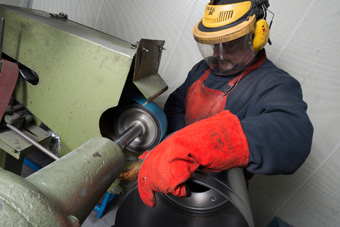 Effective control measures play a vital role in protecting people from the effects of inhaling contaminated air and should always be designed, installed and maintained by industry professionals.
Effective control measures play a vital role in protecting people from the effects of inhaling contaminated air and should always be designed, installed and maintained by industry professionals.
Filtermist International has almost 50 years’ experience in ensuring workshop air is clean and safe to breathe. Kevin Hood, Sales Director at Filtermist subsidiary Multi Fan Systems, and Jamie Allen, one of Filtermist’s dedicated LEV (local exhaust ventilation) engineers, discuss the importance of working with professionals with specialist expertise.
Extraction System Specification
“Regulations including CoSHH (Control of Substances Hazardous to Health) and DSEAR (Dangerous Substances and Explosive Atmospheres Regulations 2002) require exposure to hazardous, potentially explosive substances to be prevented or minimised as much as possible,” says Kevin.
“The best way to do this is by installing an LEV system to extract and filter contaminated air at source – this approach protects operatives by ensuring that the hazardous substance does not enter workplace air.
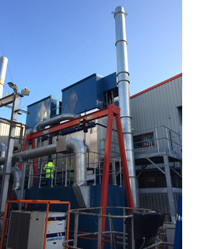 “From the outset, it is vital to establish exactly what substances need removing. If the substance is classified as explosive, such as flour, wood or aluminum dust, ATEX rated explosion relief panels should be incorporated into the design of the LEV system. This can have implications on the position of the filtration unit - ideally the unit should be located outside so that in the event of an explosion occurring, the blast is outside away from works personnel, rather than inside, the factory.
“From the outset, it is vital to establish exactly what substances need removing. If the substance is classified as explosive, such as flour, wood or aluminum dust, ATEX rated explosion relief panels should be incorporated into the design of the LEV system. This can have implications on the position of the filtration unit - ideally the unit should be located outside so that in the event of an explosion occurring, the blast is outside away from works personnel, rather than inside, the factory.
“However, when this isn’t possible effective suppression systems should be incorporated into the system design.”
Explosion relief panels are also a consideration for Filtermist’s LEV engineers during routine LEV Tests, as Jamie explains, “We carry out a comprehensive risk assessment as part of all LEV Tests and if this shows that the system is being used to extract potentially explosive substances, we will check to make sure ATEX rated panels are in use.
“If they are missing, we will include a recommendation that they need installing immediately in the report submitted to the customer. We strongly advise that all of our recommendations are acted on, but in hazardous environments this is even more important as it can literally mean the difference between life and death.”
Correct design of all dust control systems is key as Kevin explains, “We provide customised systems depending on specific client requirements and will select which dust filter is used depending on the characteristics of the dust that needs extracting.
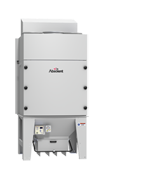 “The standard A•dust range from Filtermist’s sister company Absolent AB offers airflows of up to 13500 m³/h depending on the type of particulate which is being filtered, and other filters are also available for larger airflows. These filters are ideal for a wide range of dry applications, but in certain situations a wet scrubber might be more appropriate.
“The standard A•dust range from Filtermist’s sister company Absolent AB offers airflows of up to 13500 m³/h depending on the type of particulate which is being filtered, and other filters are also available for larger airflows. These filters are ideal for a wide range of dry applications, but in certain situations a wet scrubber might be more appropriate.
“As well as vented explosion relief panels, certified ATEX equipment including anti-static filter bags, earth bonds, and non-sparking components can all be used to handle potentially explosive particulate. Explosion isolation valves and possibly fire dampers should also be incorporated into the ducting to prevent propagation of explosions or fire spreading in the event of an incident.
“We consider all aspects before recommending specific system components.”
Stand-alone or central extraction system?
Another important factor when it comes to system design is whether a stand-alone filtration unit, or a centralised system drawing contaminated air from multiple pick-up points would be more effective. “Again, this depends on the specific circumstances surrounding the job,” says Kevin. “The type and volume of contaminant, the number of extraction points required, available space, and budget will all have an impact on the final recommendation.”
Legal requirements
“Up to date knowledge of all relevant legislation is also key,” continues Kevin. “As well as a thorough working knowledge of regulations designed to control indoor air quality, if the extraction system is being vented outside, pollution prevention and control considerations must also be taken into account.”
Performance monitoring
Once the extraction system has been installed, it is then the responsibility of the employer to ensure it consistently performs as intended. CoSHH regulation 9.2 requires most LEV systems to be tested by a competent person at least once every 14 months.
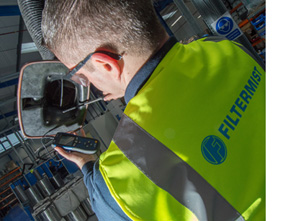 “The engineer will use a variety of equipment including a rotating vane anemometer or a hot wire anemometer to measure velocity at the test point, and a pitot tube to test pressure. Readings will then be compared with data in the system’s design specification and used as a benchmark to ensure performance is being maintained,” Jamie comments.
“The engineer will use a variety of equipment including a rotating vane anemometer or a hot wire anemometer to measure velocity at the test point, and a pitot tube to test pressure. Readings will then be compared with data in the system’s design specification and used as a benchmark to ensure performance is being maintained,” Jamie comments.
As well as employers’ responsibilities under CoSHH regulations, employees are also required to play their part in safeguarding the workforce. Operatives are required to report ‘forthwith’ any defects in the LEV system which could impact on its ability to work as intended.
Jamie elaborates on how this requirement can be achieved; “There are a number of ways of checking that an LEV system is working correctly between routine LEV Tests. Daily checks should be carried out to look for any obvious signs of wear and tear, or indications that there may be contamination in the air.
“Pressure gauges and airflow indicators can be used to clearly identify pressure drops or other potential issues with the system. Using a dust lamp makes it easy to see airborne particulate, as well as checking that the fan is drawing the contaminated air into the filtration system.
“Smoke sticks can also be used to check the direction of extraction. Observations and data should be recorded in a log-book which can be used as an auditable trail in the event of any issues with the LEV system.”
Follow this link to find out more about the range of air monitoring equipment that Filtermist offers.
Air monitoring
Air monitoring is designed to ensure control measures are working as intended and employees are breathing air which is clean and safe. “Static monitoring can be used to assess air quality in a specific area, whilst personal monitoring samples air in the operator’s breathing zone,” says Jamie. “The results are then compiled into a report which can be used to help employers ensure they are compliant with current legislation and fulfilling their duty of care to employees.”
Health and Safety Executive (HSE)
Reducing the instances of occupational lung disease caused by exposure to hazardous substances in the workplace is one of three key focuses of the HSE’s current Health and Work strategy. According to HSE, in 2016 occupational respiratory disease was responsible for approximately 12,000 deaths in the UK; dust inhalation is a major contributory factor in this statistic.
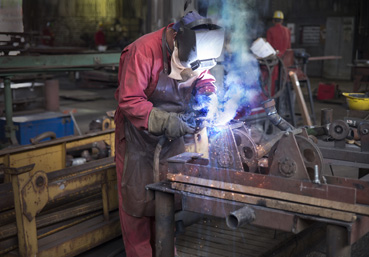 HSE’s Dust Hub provides extensive information and guidance for employers and employees.
HSE’s Dust Hub provides extensive information and guidance for employers and employees.
Filtermist’s Director of Sales, Stuart Plimmer, concludes, “All employers have a duty to protect people from exposure to dust particles - nowhere is this more important than in environments where potentially explosive dust is created.
“Filtermist provides a comprehensive nationwide dust removal service for facilities of all sizes. From system design and installation, to routine maintenance, LEV testing and air monitoring – our turnkey service ensures workers are safe.”
Useful links
HSE provides extensive information designed to help both employers and employees, including the following resources which can all be accessed via its website:
• Safe handling of combustible dusts: Precautions against explosions
• Dust in the workplace - General principles of protection
• The dust lamp – a simple tool for observing the presence of airborne particles
• Wood dust – controlling the risks
• This short HSE film explains LEV in more detail.
Follow this link to find out more about Multi Fan Systems' Dust Control service.